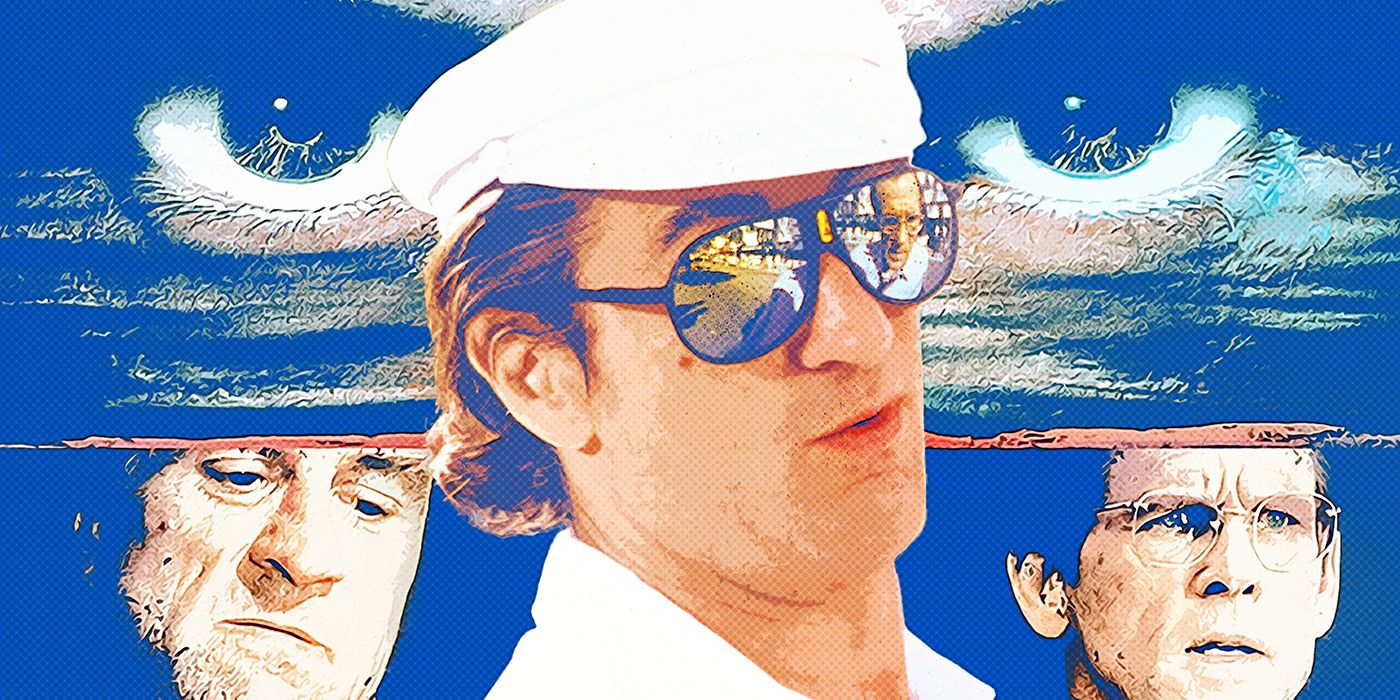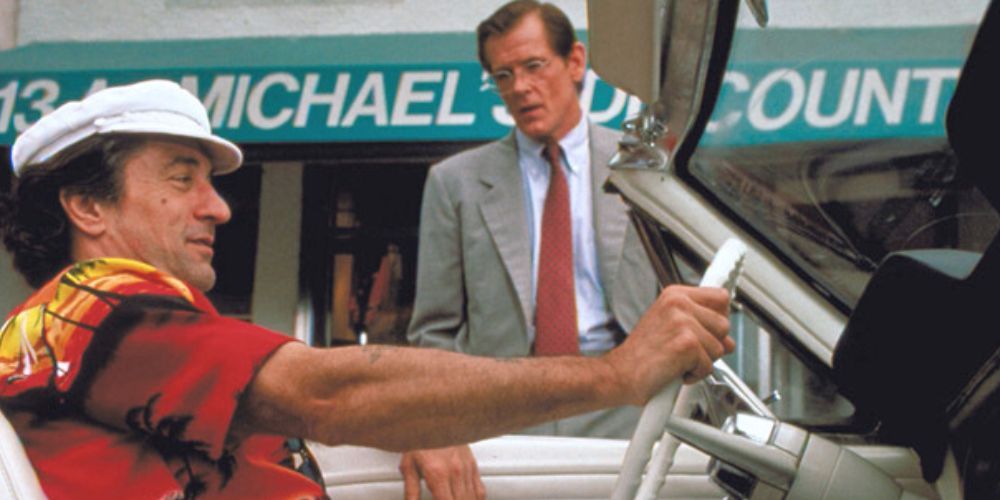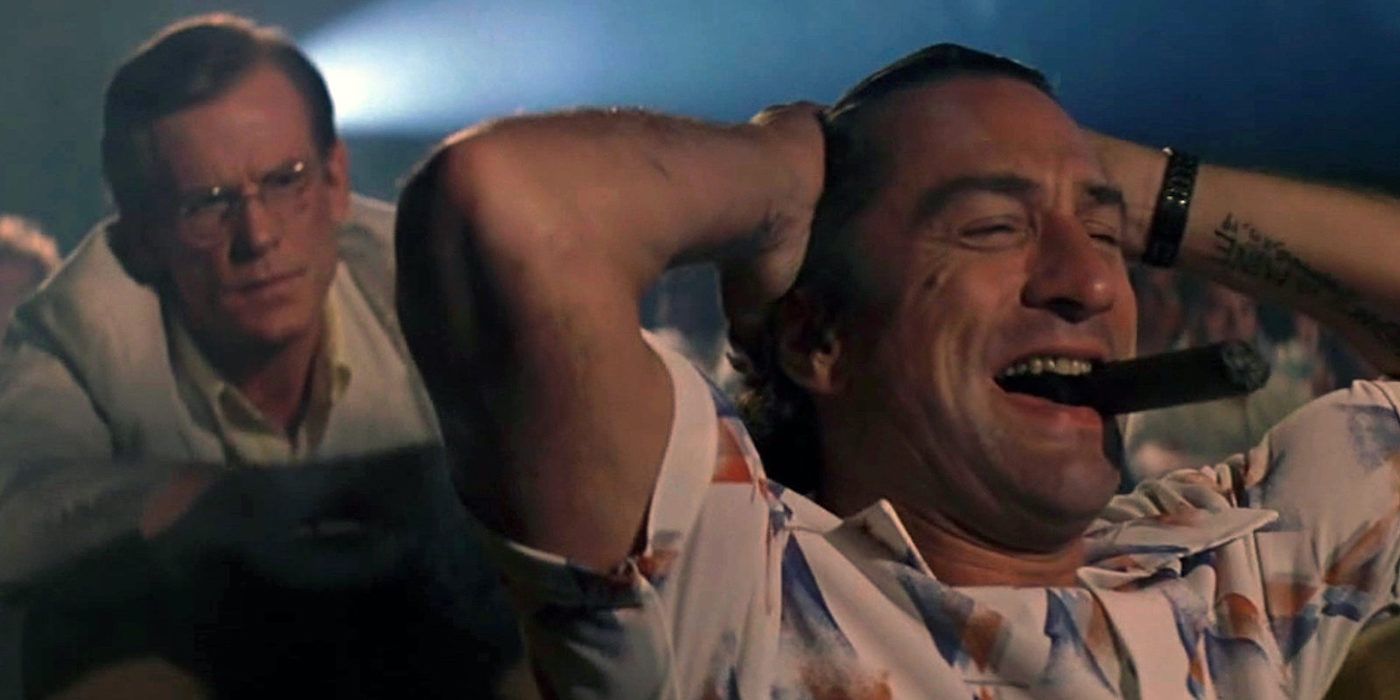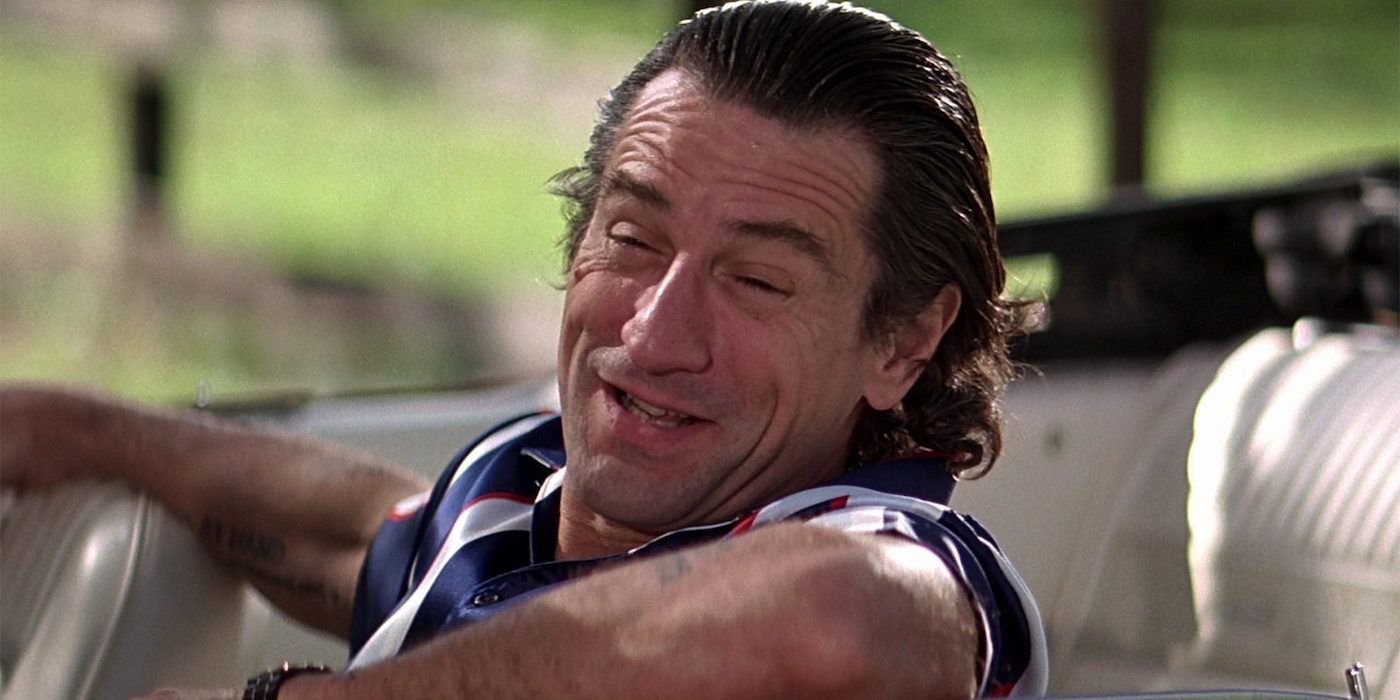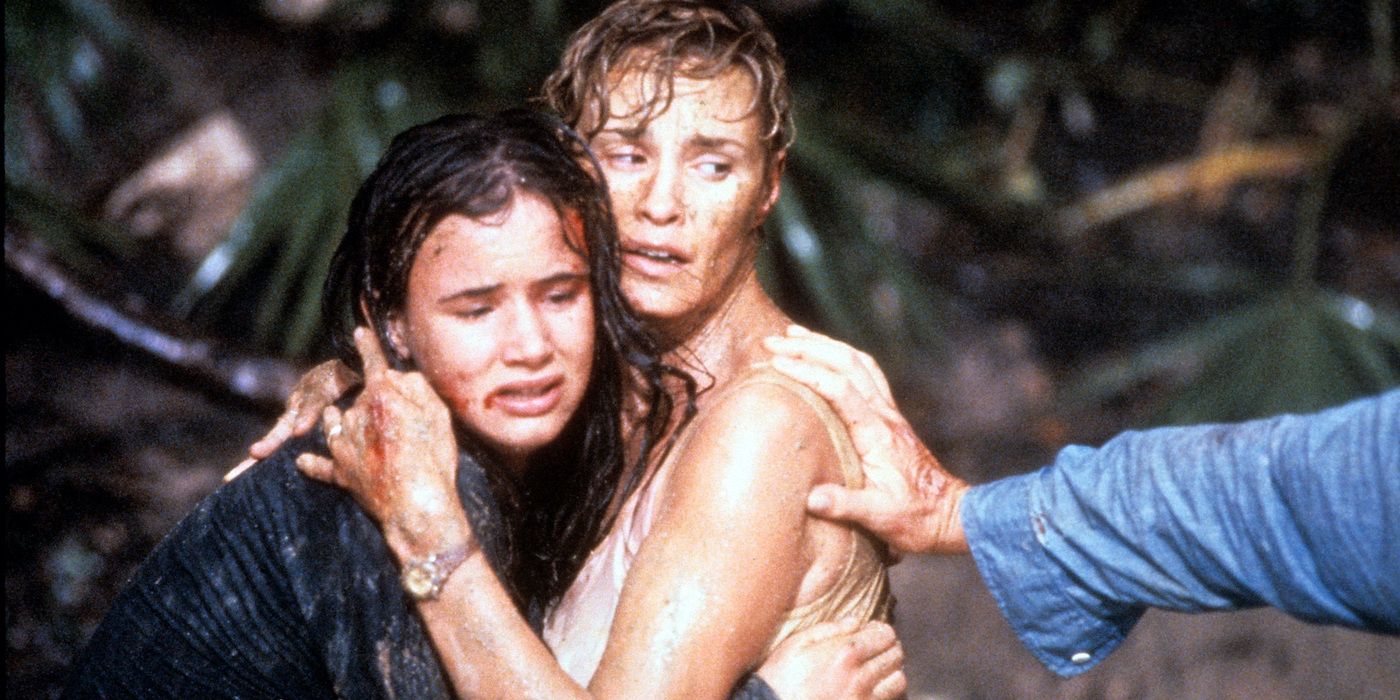Martin Scorsese recently turned 80 and naturally, an avalanche of glowing tributes and "best of" pieces have popped up to commemorate the milestone occasion. The revered auteur was one of the driving creative forces throughout the Hollywood New Wave of the 60s and early 70s, and his many gritty urban crime flicks continue to routinely and deservedly whip up widespread international adoration. From Raging Bull to Goodfellas, there was seemingly no slowing the mob flick zeitgeist of the era. That is until Universal came calling, bearing a modernized version of the seminal 1962 neo-noir thriller Cape Fear in their clutches.
Adapted from John D. McDonald's quickfire airport novel The Executioners, the original film was released through star Gregory Peck's production company at the time. The reworked title, also the brainchild of Peck, came via the belief that place name movie titles serve as a good omen for success according to The Making of Cape Fear. The resulting film was a Hitchcockian excursion in tightly wound suspense, with Peck and an unforgettable Robert Mitchum serving as expert foils for one another set against a sweltering Southern backdrop. Thankfully, the remake was delivered to safe hands, and in 1991 - the movie that reintroduced audiences to that iconic score manages to outdo its predecessor in its relentless, Grand Guignol theatrics. Prior to Cape Fear, Scorsese kept his films grounded and authentic, typically exciting, but never approaching any kind of hyper-reality. Here, he goes for the jugular umpteen times and significantly ramps up the villainy of his Max Cady incarnation (Robert De Niro).
A Change in Stylistic Direction for Scorsese
Scorsese wanted to make a classic thriller, and both he and Robert De Niro were enthusiastic about collaborating on a picture far removed from their previous projects. With Cape Fear, terror was firmly on the menu - and the sheer velocity and amplified drama of their reimagining could just as easily lend itself to the psychological horror genre. For in its stylized aesthetic - parallels to some of Brian De Palma's 80s opuses can be made. Supplanting the languid, deliberate pacing of his previous epics with a blindingly paced series of events that refuses to do anything but keep hearts on speed dial - it's a relentless ride.
Right from the deeply unsettling opening titles (courtesy of the ingenious Saul Bass), and watery stylization of the Universal logo, there's an eminent sense of throwback fun on the horizon. Retooling the singular score used by Bernard Herrman in the original, the opening credit sequence is an artistic, slightly Vertigo or Spellbound-esque fever dream that expertly sets the pace for what's to come. Prior to Cape Fear, Scorsese had never attempted such a sequence - perhaps his previous projects didn't quite provide the kind of space needed for such an off-the-wall mode of expression, but the hallucinatory start employed here serves as a prime gateway into the director's most downright thrilling film
Tweaking the Bowden Dynamic and Amplifying Cady's Villainy
Scorsese subverts the tropes of the family-in-peril drama from the get-go by rendering the Bowden clan an institution of dysfunction. Instead of the fairly purist family unit of the original whose lives are upturned solely as the result of Cady's fiendish revenge fantasy, is a trio already riddled with infighting, tension, and hostility. It's a foundation on the brink of breaking point well before the dastardly Cady makes his unannounced arrival. Every member of the Bowden family, Sam (Nick Nolte), Leigh (Jessica Lange), and Dani (Juliette Lewis), harbors resentment - unresolved issues run rampant.
From the outset, it appears they are relatively functional, or at least surface-level happy as they go about trips to the ice cream parlor and cinema (hijacked by Cady's maniacal cackling). It takes a cleverly inserted early line of dialogue delivered by Lange's Leigh which serves as the first harbinger that there's simmering distrust lurking beneath the initially rosy facade: "You know how to fight dirty, you do that for a living." When there's a plain, pre-existing disharmony rife within the family we follow, the stakes are raised considerably higher, and the audience is forced to accept and acknowledge the cracks and fissures before siding with the tormented.
There are also critical narrative updates, and as a result of these script changes and reconfiguration of character and motivation, Scorsese is able to thematically and visually push and manipulate murky morals and the unreliable protagonist. In the original, Cady is put away as the result of Sam's witness testimony, and his sentence is only 8 years. Here, Cady has walked out of prison having spent 14 years in "an eight by nine cell," and was put there as a result of his assigned public defender (Sam) refusing to release a document that may have greatly lessened the length of his stretch. It was a tactic employed by Sam because he did not want Cady to receive light punishment.
Visual Panache and Homages
Scorsese tightens the screws of suspense expertly; channeling Giallo cinema in its garish color palette and Psycho-era shockers through the visual landscapes he creates. The flair for psychological melodrama recalls films such as Whatever Happened to Baby Jane? in its hysterics. Doors and windows are latched and locked with frenzied fury - every sound amplified. The fast-paced editing disorients and throws the viewer suitably off balance as the score swells and screeches - acting as an all-too-intense soundtrack to the mayhem unfolding.
The themes of religiosity, revenge and altered destinies that underpin the film pop up visually via some deft symbolism, such as when the camera lingers on a sign Sam passes when hurtling off to the titular river, reading "Where Will You Spend Eternity?" One masterfully blocked shot involves the Bowden car stealthily returning to their homestead right before they set "the trap" to lure Cady, as a burning orange sky watches overhead. The classic noir Venetian blind trope is snuck in nicely as well, such as when Leigh discovers a peeping Cady occupying the fence that bounds their property, bars of shadow and light washing over her face as an oddly timed fireworks display erupts outside.
The frenetic cross-cutting from scene to scene hints at the sleeplessness the main characters are experiencing as we cut from a tense office telephone conversation to an extreme close-up of a bemused Sam driving home upon learning tragic news. Or when a parole hearing concludes without pause and crashes into the next scene with Bowden storming into private detective Kerserk's (Joe Don Baker) office in a state of agitation. There's a breathlessness to the film's momentum and overall flow that Scorsese engineers like a maestro. Virtuosic filmmaking and memorable in its visual language, it's a flick that is never short of arresting.
Unsettling Encounters
In a film littered with scenes that stand out due to their intensity, there are a few that are particularly noteworthy for their daring nature and the role they play in distinguishing the film from the others in its director's canon. There is, of course, the encounter between Cady and Dani in the school's theater with the former masquerading as the latter's drama teacher. It's gut-wrenching to watch as the extent of Cady's manipulative, deranged nature is fully realized. Here, it becomes clear as to the lengths he will go to bring harm to the Bowden family, not just Sam. It's bravely played by both actors as Cady tries to force "a connection" before Dani flees in a flight of panic.
When Cady decides to go after one of Sam's chummy colleagues (a clerk named Lori, played by Illeana Douglas), the results are terrifying. Cady makes it his mission to damage Sam's life through whatever means necessary, and here he lures an unsuspecting Lori (who admits to being taken with Sam) out of a bar under the pretense of mutual attraction. Of course, Cady knows Lori won't testify to preserve her own reputation. It's grim, unsettling, and highly memorable. The equivalent scene in the 1962 version is also disquieting in its chiaroscuro, unspoken cat-and-mouse pursuit; a stark contrast to the in-your-face luridness of Scorsese's interpretation of the ill-fated interaction.
Killer Performances and Nods to the Original
Robert De Niro is utterly terrifying and captivating here. As the leering, god-complex afflicted psychopath Cady, he is equal part charisma and creep. Despite his character's reprehensible past, he is able to imbue the role with a bold, rebirth-fixated "phoenix rising again from the ashes" mindset that is unable to be shaken away. It's monster-movie scary: a self-deifying, indomitable, walking weapon. Despite his indiscretions, Cady believes he's entitled to the most brutal form of justice conceivable, and with Scorsese obviously giving his long-time collaborator a free rein to go all in - the results work brilliantly given the tone of the film.
Nolte, Lange, and especially Lewis are all similarly remarkable in their roles and deserving of high praise. Nolte demonstrates high skill in portraying Sam as an at-times ineffectual, secretive patriarch who can't seem to put a foot right as the situation quickly escalates beyond his control. Jessica Lange essays Leigh's barely contained depressive and highly strung nature with precision. Juliette Lewis, who like De Niro was nominated for an Academy Award, delivers a bravura performance as the impressionable and confused Dani. There's a sensitivity and bravery to her portrayal in a role that would not have been easy to play. The bringing back of screen legends Peck (who plays a sought-after lawyer), Mitchum (as a world-weary detective), and Martin Balsam (who played a police chief in the original and a jaded judge here) serve as brilliant mini-tributes to the J. Lee Thompson original that inspired it.
An Unprecedented Last Act
And of course, there's the ending. A houseboat at the whim of a storm, the finale neatly encapsulates the animalistic madness of the film and provides jolt after jolt. The Bowden flee, as they are sapped of hope and completely exhausted of ideas after their attempts to deceive and rid themselves of Cady via a homemade trap fails miserable. Contrary to the original, wherein the stark black and white photography creepily adds to a sense of quietly mounting suspense as Peck and Mitchum tangle in the wilderness after the former scurries back and forth protecting his family, this third act is deafening.
Prior to the third act, we find out, in a chilling metaphor that you can never truly or easily extricate yourself from the past, that Cady had been riding on the undercarriage of their car the entire time. Another example of a fairly gonzo image that adds mightily to a sense of otherworldly terror - it's these inclusions that heighten the danger to unearthly levels. Cady boards the vessel and delivers a terrifying sermon to the hapless Bowdens. Drawing on his newfound legal lingo, he puts the family on trial for the perceived injustices he has had to withstand, and the supposed illegitimate defense put forth by his lawyer-turned-foe.
Of course, ultimately, Sam gains the upper hand as the boat lurches. Cuffing Cady to a post, he finally defeats his enemy as the fast-sinking vessel disappears shortly after a bizarre rock right between the two men. Sam, panic-stricken, then quite literally washes his hands of his life conflicts. It's one of the most willfully over-the-top, exciting conclusions to a film of the era. As Lewis' Dani utters via voiceover just before the screen fades to black, "And for myself, I know I'd rather live," Scorsese's high-octane, unforgettable rendering of a classic thriller will leave you reeling. Dizzyingly alive certainly, but also emotionally drained and more than a little frightened. His approach to Cape Fear, which oozes style, manages the lofty feat of a remake equaling or even surpassing the excellent original, and he renders one of the best, most unabashedly wild rides of the 90s in the process.

